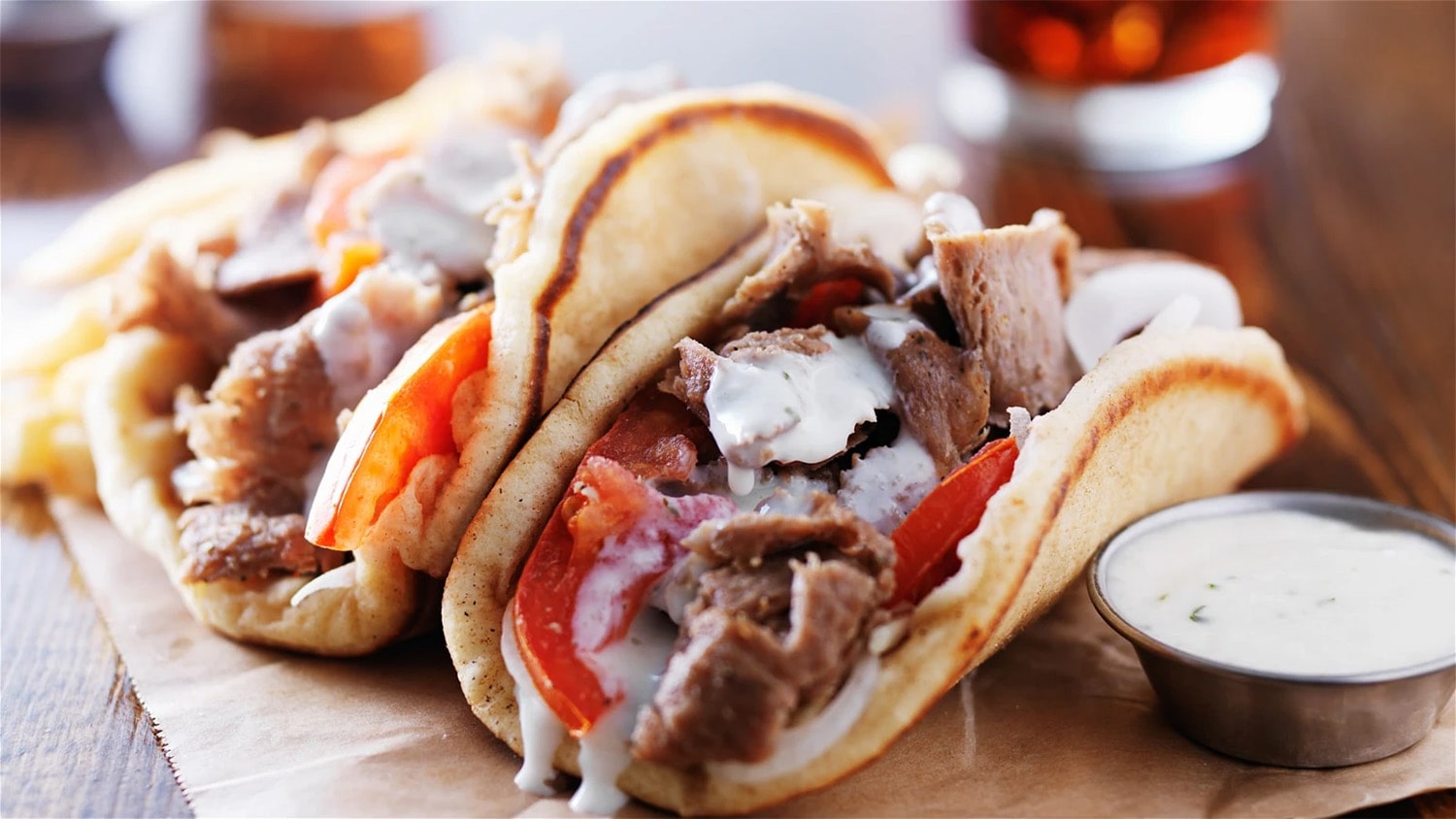
34 interesting facts about gyros
- 👁️ 343
Gyros, a dish that embodies the spirit of Greek cuisine, has tantalized taste buds around the world with its savory flavors and unique preparation style. This delightful dish, often wrapped in a soft pita and garnished with a variety of condiments, is not only a staple in Greek food culture but also a popular choice in many other countries. Here, we delve into the intriguing world of gyros, uncovering aspects that might surprise even the most avid food lovers. Join me as we explore the rich history, preparation, and cultural significance of this beloved Greek fast food.
- Gyros is a Greek dish made from meat cooked on a vertical rotisserie, traditionally pork or chicken in Greece, but lamb, beef, or mixed meats elsewhere.
- The name “gyros” comes from the Greek word for “turn,” reflecting the turning action of the rotisserie.
- It was first introduced in Greece in the 1920s by immigrants from the Middle East.
- In Greece, gyros is typically served wrapped in a flatbread like pita, with toppings such as tomato, onion, fried potatoes, and tzatziki sauce.
- The meat for gyros is usually marinated overnight in a mixture of olive oil, garlic, oregano, and lemon, enhancing its flavor and tenderness.
- Tzatziki, the traditional sauce served with gyros, is made from strained yogurt, cucumbers, garlic, and herbs.
- Gyros shares similarities with other dishes from the Eastern Mediterranean and Middle East, such as the Turkish döner kebab and the Middle Eastern shawarma.
- In the United States, gyros meat is often a beef and lamb mix, different from the more common pork gyros in Greece.
- The meat is cooked on a tall vertical rotisserie that turns slowly beside a heating element, which caramelizes the outer layer.
- Slices are shaved off from the outer layer of the cooked meat as it continuously rotates.
- The introduction of gyros in the United States is often credited to George Apostolou, also known as “Papa George,” in the 1960s.
- Chicago is considered a hub for gyros production, with numerous manufacturers based in the city.
- Gyros became a popular street food in Greece and beyond, appealing because of its quick preparation and delicious taste.
- The vertical rotisserie cooking method was originally developed in the 19th-century Ottoman Empire.
- It is common for gyros to be served with a side of Greek salad, which includes tomatoes, cucumbers, onions, olives, and feta cheese.
- The typical spices used in gyros meat preparation include cumin, thyme, rosemary, and sometimes cinnamon or nutmeg.
- In Greece, the pita for gyros is often grilled slightly on the rotisserie before being filled.
- Health-conscious variations of gyros are made with lower-fat meats like chicken or turkey.
- Gyros is often compared to souvlaki in Greece, which is typically skewered and grilled meat rather than meat cooked on a rotisserie.
- In 1971, the first known gyros dedicated restaurant opened in New York City.
- The popularity of gyros has led to its adaptation into other dishes like gyros pizza and gyros burgers.
- Some vegetarian versions of gyros use seitan or grilled vegetables instead of meat.
- The largest gyro ever made weighed over 8,866 pounds and was created in Cyprus in 2009.
- A key to delicious gyros is the fat content in the meat, which keeps the meat moist and flavorful during the slow cooking process.
- Street vendors and casual dining establishments most commonly serve gyros, making it a popular fast food option.
- The assembly of a gyro involves a specific order of ingredients to ensure every bite has a balanced flavor.
- Many Greek festivals around the world feature gyros as a main attraction due to its popularity and easy portability.
- The spread of gyros across Europe and America has introduced variations in the type of bread, with some places using tortillas or different types of flatbreads.
- The success of gyros in international cuisine is attributed to its unique blend of spices and the distinctive cooking technique.
- Gyros is a favorite late-night snack in many cities, often consumed after a night out.
- The preparation and serving of gyros can be a theatrical experience, attracting customers with the sight and smell of the rotating meat.
- Economic downturns tend to see a rise in gyros sales, possibly due to its affordability and filling nature.
- Gyros has been a subject in culinary competitions where chefs attempt to put gourmet spins on the traditional street food.
- The meat used in gyros can also be served on a plate, commonly referred to as a “gyro platter,” and eaten with a fork and knife.
In conclusion, gyros not only offers a delectable taste experience but also embodies a rich culinary tradition that blends history, culture, and innovation. Its popularity continues to grow globally, making gyros a symbol of Greek culinary influence and a beloved dish among diverse populations. This savory wrap remains a testament to the timeless appeal of simple, well-seasoned ingredients cooked to perfection.
Gyros, a dish that embodies the spirit of Greek cuisine, has tantalized taste buds around the world with its savory flavors and unique preparation style. This delightful dish, often wrapped in a soft pita and garnished with a variety of condiments, is not only a staple in Greek food culture…